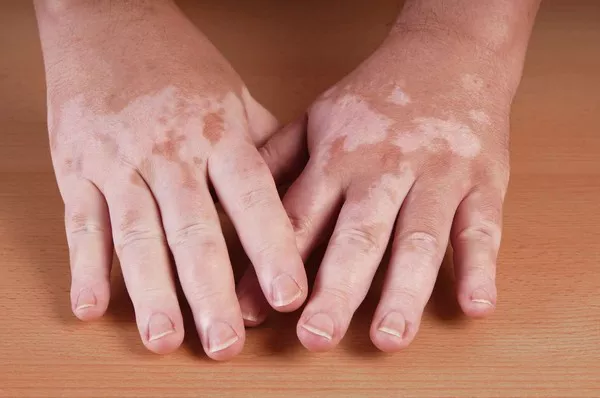Vitiligo is a chronic skin condition characterized by the loss of skin pigmentation, resulting in patches of depigmented skin. While the exact cause of vitiligo remains unclear, it is believed to be related to autoimmune factors, genetic predisposition, and environmental triggers. Managing vitiligo involves a multifaceted approach that includes avoiding certain factors that can exacerbate the condition or compromise skin health. Here’s a comprehensive guide on what to avoid when dealing with vitiligo.
Avoiding Sun Exposure Without Protection
One of the most crucial aspects of vitiligo management is sun protection. The depigmented patches of skin in individuals with vitiligo lack melanin, the pigment responsible for protecting the skin from harmful UV rays. Excessive sun exposure can lead to sunburns, which can be more pronounced and damaging in areas affected by vitiligo. Sunburns can further compromise skin health and increase the contrast between pigmented and depigmented areas.
What to Do: Use broad-spectrum sunscreen with a high SPF (Sun Protection Factor) daily, even on cloudy days. Wear protective clothing, such as hats and long sleeves, and seek shade during peak sun hours to minimize sun exposure.
Avoiding Harsh Chemicals and Irritants
The skin affected by vitiligo is often more sensitive and prone to irritation. Harsh chemicals found in certain skincare products, cosmetics, and household cleaners can aggravate the skin and trigger inflammation. This can potentially worsen the appearance of vitiligo patches and compromise the overall health of the skin.
What to Do: Opt for gentle, fragrance-free skincare products and cosmetics labeled as hypoallergenic and non-comedogenic. Avoid products containing harsh ingredients like alcohol, artificial fragrances, and sulfates. Choose mild, non-irritating detergents for laundry and avoid using excessive fabric softeners.
Avoiding Trauma to the Skin
Physical trauma to the skin, such as cuts, scrapes, burns, or friction, can trigger or exacerbate vitiligo in affected areas. Koebner phenomenon is a condition where new areas of vitiligo develop at sites of injury or trauma to the skin. Therefore, it’s important to take precautions to prevent unnecessary trauma or injury.
What to Do: Handle the skin affected by vitiligo gently. Avoid activities that increase the risk of trauma, such as aggressive exfoliation, scratching, or wearing tight clothing that may cause friction. Use caution when engaging in physical activities to minimize the risk of injury.
Avoiding Stress and Emotional Distress
Stress is known to exacerbate various skin conditions, including vitiligo. Emotional distress and anxiety can trigger flare-ups and make the condition more difficult to manage. Additionally, the visibility of vitiligo patches can sometimes lead to negative self-image and psychological stress.
What to Do: Practice stress-reducing techniques such as yoga, meditation, deep breathing exercises, or mindfulness. Engage in activities that promote relaxation and overall well-being. Seek support from friends, family, or a mental health professional if needed to manage emotional challenges associated with vitiligo.
Avoiding Smoking and Excessive Alcohol Consumption
Both smoking and excessive alcohol consumption can negatively impact overall skin health and exacerbate skin conditions like vitiligo. Smoking reduces blood flow to the skin, which can impair healing and contribute to premature aging. Alcohol can dehydrate the skin and compromise its barrier function.
What to Do: Quit smoking if you are a smoker, and limit alcohol consumption to moderate levels. Drink plenty of water to stay hydrated, as proper hydration is essential for maintaining skin health.
Avoiding Self-Diagnosis and Unproven Treatments
It’s essential to seek professional medical advice and guidance when managing vitiligo. Avoid self-diagnosis and the use of unproven treatments or remedies promoted online or by unqualified sources. Some treatments may be ineffective, costly, or even harmful.
What to Do: Consult a dermatologist or healthcare provider specializing in skin disorders for proper diagnosis and treatment options. Follow the recommended treatment plan and discuss any concerns or questions you may have about managing vitiligo effectively.
Conclusion
While vitiligo can pose challenges, managing the condition involves adopting healthy lifestyle practices and avoiding factors that can exacerbate symptoms or compromise skin health. By prioritizing sun protection, using gentle skincare products, minimizing trauma to the skin, managing stress levels, adopting healthy habits, and seeking professional medical advice, individuals with vitiligo can effectively manage their condition and support overall skin health and well-being. Remember, consistency and patience are key when it comes to managing vitiligo, and with the right approach, individuals can feel empowered and confident in their skin.
Related Topics:



























